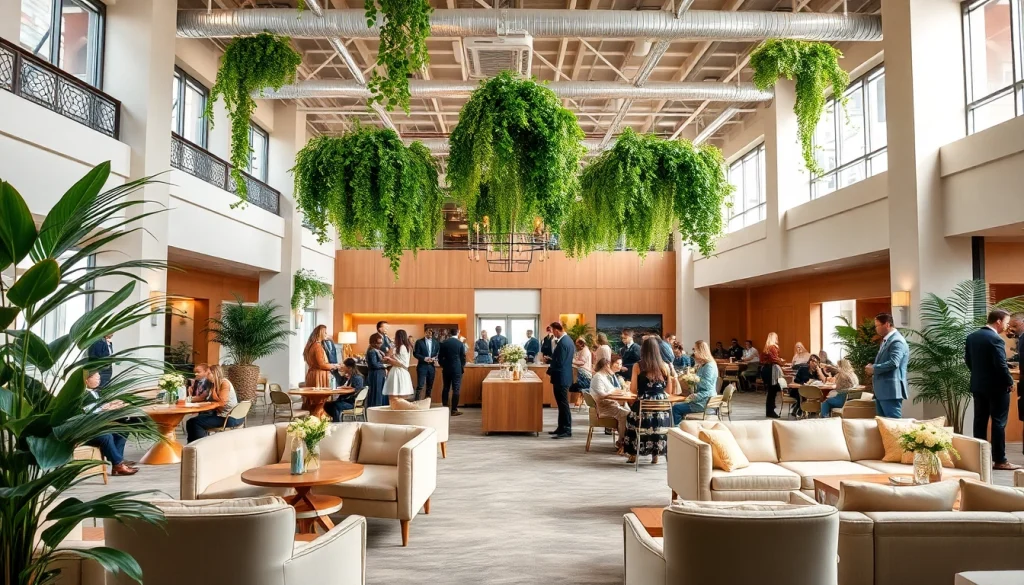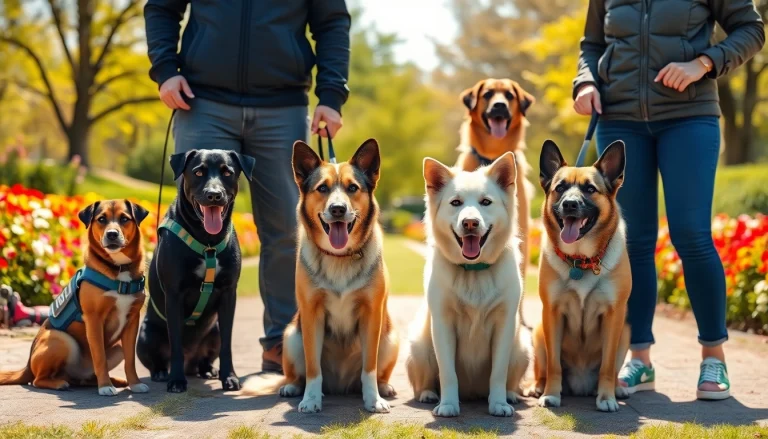
Understanding Your Event Space Needs
Choosing the right event space can be daunting, as numerous factors need to be considered to ensure that your gathering is a success. Whether you’re planning a corporate meeting, a wedding, or a creative showcase, understanding your specific needs is a vital first step. It involves assessing capacity, defining the purpose of the event, and identifying which amenities are essential to facilitate a seamless experience for both you and your guests.
Assessing Guest Capacity
The first step in determining the ideal event space for your occasion is to assess your expected guest capacity. Knowing how many attendees to anticipate allows you to narrow down your options significantly. Many venues have fixed capacities based on local regulations, and overcrowding can lead to uncomfortable situations.
Start by creating a comprehensive guest list and categorize attendees into essential and non-essential groups. This prioritization helps you in making decisions in case your desired venue cannot accommodate everyone. Moreover, consider aspects like mandated social distancing or necessary seating arrangements, as these may further influence the maximum capacity of your chosen venue.
Defining Event Purpose
What is the fundamental aim of your event? Company branding, celebrating a milestone, or fostering creative inspiration can drastically affect your venue choice. Thus, having a clear goal will guide the selection process. Corporate events, for instance, may lean towards professional settings that focus on functionality, while weddings might prioritize aesthetic ambiance.
Additionally, determining if the gathering is educational, celebratory, or strategic can align the event space setup with its ultimate purpose. You may also wish to consider how the space will support breakout sessions or networking activities, especially for professional events.
Identifying Essential Amenities
Beyond just size and location, various amenities can elevate the quality of your event. Common amenities to consider include:
- A/V Equipment: Ensure the venue can facilitate presentations, video conferencing, or any other tech needs.
- Catering Facilities: Consider if you require an in-house kitchen or catering services.
- Restrooms: Adequate restroom facilities must be available, especially for larger events.
- Wi-Fi Access: A seamless internet connection is vital for business events and communication.
- Parking: Sufficient parking space is crucial for accessibility.
By outlining these amenities, you can align your venue choices with your essential event needs without overlooking significant aspects.
Types of Event Spaces to Consider
Event spaces vary widely, and each offers unique benefits tailored to different types of gatherings. It’s crucial to explore the variety to find what best suits your needs.
Corporate Event Spaces
Corporate events range from meetings to product launches, and each type requires distinct settings and facilities. Corporate event spaces should be conducive to professional networking and efficient communication. These venues typically feature:
- Conference Rooms: Equipped with projectors, video conferencing capabilities, and adjustable seating arrangements.
- Ballrooms: Ideal for large conferences, these spaces provide ample room for both attendees and vendor displays.
- Flex Spaces: Versatile areas that can be easily modified for workshops, break-out sessions, or casual meetings depending on the event flow.
Consideration for branding is also an important element in selecting corporate spaces. Options for customization through signage and decor can enhance the overall environment and strengthen company messaging.
Weddings and Celebrations
Weddings and other personal celebrations often require a venue that offers a unique atmosphere and can accommodate various pre-event traditions, such as receptions and the exchanging of vows. Key features often sought in a wedding venue include:
- Charming Backdrops: A picturesque setting can significantly enhance wedding photographs.
- Outdoor Spaces: Many couples prefer venues with both indoor and outdoor options to accommodate changing weather conditions.
- Catering Services: Many weddings operate around a dining experience, necessitating space for food preparation or catering partnerships.
The aesthetic quality and overall vibe of the venue should align with the couple’s vision, making it a crucial aspect in the decision-making process.
Creative and Unique Venues
For events that seek to inspire, exploring non-traditional venues can set the right tone. Creative spaces often include galleries, historic buildings, rooftops, and industrial warehouses. These venues can lend a distinct flair to your event and tend to offer a more bespoke experience. Important considerations when selecting a creative venue include:
- Interiors and Decor: An interesting setting can serve as its own form of entertainment.
- Acoustic Properties: For music-related events, excellent sound quality is crucial.
- Accessibility: Ensure the venue remains inviting and accessible to all guests.
Your selection should not only fit your current needs but should also promise opportunities for future events.
Choosing the Right Location for Your Event Space
The location of your event space can have a profound impact on attendance and overall satisfaction. When choosing a venue, several factors intersect, including accessibility, surrounding attractions, and logistical considerations.
Accessibility and Transportation
Investigate the venue’s ease of access from major transportation hubs, as well as public transit options. If most attendees are local, consider the traffic patterns and how easy it is for them to reach the venue during peak hours. Providing comprehensive travel directions and suggesting nearby public transport options enhances the experience for all guests.
Surrounding Attractions
Choosing an event space near notable attractions can make the experience more enjoyable for your attendees, especially if they’re traveling long distances. Nearby attractions can serve to enhance the event or provide opportunities for informal gatherings and networking before or after official programming.
Research the interests of your attendees and consider proposing complimentary activities at nearby venues or attractions to enrich their overall experience during the event.
Parking and Logistics
Parking logistics can often become an overlooked detail, yet it plays a significant role in event attendance. Consider the following:
- Availability: Is there enough parking available for all expected guests?
- Security: Is the area safe for cars, especially during evening events?
- Costs: Are there any fees for parking? It might be beneficial to negotiate costs or offer perks for those who carpool.
Ensure that logistics for transporting materials, decorations, or catering are also clearly outlined with the venue, so that deliveries are smooth on the day of the event.
Decor and Setup for Your Event Space
Once you have selected an event space, the next step is personalization through decor and setup, which creates an environment that resonates with attendees and acts cohesively with the event’s purpose.
Creating the Right Ambiance
The ambiance of your event plays an integral role in guest perception and overall engagement. Light settings, color themes, and exploratory elements should reflect your brand or event’s purpose. Here are a few considerations:
- Lighting: Adjustable lighting can create different moods; softer lighting is ideal for intimate gatherings while brighter lights are suitable for lively events.
- Color Palettes: Coordinating the color palette in decor elements, such as table settings, flowers, and drapery, heightens the overall atmosphere.
- Interactive Elements: Consider incorporating interactive installations or spaces that inspire guests to engage.
Don’t hesitate to look for inspiration from successful events in your industry or even seek the advice of a professional decorator specializing in event spaces.
Optimal Layout Configurations
The layout configures how attendees interact with the space and facilitates the flow of the event. There are numerous configurations to consider, including:
- Theater Style: Best for presentations, this layout optimizes seating to focus all attention on the speaker.
- Round Tables: Encourages networking and conversation, making it suitable for banquets.
- U-Shape: Ideal for discussions, allowing direct interaction among participants.
Assess the space’s dimensions closely to avoid crowding and ensure everyone has a chance to engage comfortably.
Incorporating Technology and Equipment
As technology becomes increasingly important in events, consider the equipment available at the venue. Reliable AV equipment, high-speed internet connections, and any necessary tech support should be assessed well in advance. The following are common tech needs for various events:
- Microphones: Particularly important for larger venues or discussions.
- Projectors and Screens: For presentations or multimedia displays.
- Live Streaming Capabilities: Especially useful for hybrid events, allowing remote participation.
Work with tech professionals who can tailor setups based on your specific requirements.
Maximizing the Impact of Your Event Space
Making the most of an event space involves not only proper planning but also engagement strategies that ensure a memorable experience for attendees. Here’s how to maximize impact effectively.
Engaging Attendees Effectively
Engagement can significantly enhance an event’s value. Techniques to foster active participation include:
- Ice Breakers: Plan ice-breaker activities to ease attendees into interaction.
- Feedback Mechanisms: Equip spaces for attendees to provide real-time feedback during the event via interactive polling or micro-surveys.
- Networking Opportunities: Schedule dedicated networking sessions that are clearly communicated within the event schedule.
Incorporating unique and innovative techniques will resonate well and enhance your event’s value proposition.
Gathering Feedback and Metrics
Feedback collection is crucial for continuous improvement. This can be achieved through:
- Post-Event Surveys: Gather insights from attendees about their experiences to improve future events.
- Social Media Analytics: Monitor social media engagement that correlates to your event’s performance.
- Attendance Tracking: Analyze attendance rates, including no-shows or early departures, to understand attendee satisfaction.
Metrics will help in demonstrating an event’s return on investment (ROI) and in validating the selected venue’s effectiveness.
Post-Event Follow-Up Strategies
Following up with attendees extends the experience beyond the actual event day. Consider the following strategies:
- Thank You Notes: Personalize messages to attendees expressing gratitude for their participation.
- Event Highlights: Share a recap or a highlights reel to reinforce key takeaways.
- Continuous Engagement: Keep your audience engaged with newsletters or invites to future events.
Leveraging follow-ups to nurture attendees can yield lasting connections and strengthen brand loyalty.






